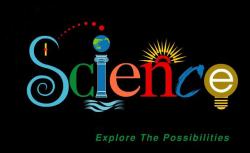Mark Young | Tue August 16, 2011
I love that swan explanation. I think I heard that in undergrad stats class, but totally forgot it. Excellent post as usual brother!

August 14 2011
Hypothesis testing is one of the most important concepts in scientific studies, but most people don't understand it. Atleast I didn't get it when I took my stats and research class. In this article, I will try to elucidate this concept by comparing it to the recent Casey Anthony trial

Hypothesis Testing: Hypothesis testing is a method used to make a decision in scientific studies. It tries to figure out if a hypothesis is true based on probabilities.
Imagine you want to test if Drug A is better or not in lowering deaths in cancer patients compared to a Drug B. In hypothesis testing, you first come up with 2 hypotheses.
This didn't make any sense to me when I was introduced to this concept.
If you want to show a difference, why just start with one hypothesis that there is a difference between the drugs and try to prove it? Why the heck should you come up with a hypothesis that there is no difference and then try to disprove it to show there is a difference? It seems counter intuitive to most people, but there is a good reason as you will see.
Popper's Theory: According to Karl Popper, one of the great philosophers, you cannot prove a theory, you can only disprove it. For example, let's say you want to prove a theory that all swans are white. This will be extremely hard to prove since you will have to go to every nook and corner of the world to make sure all swans are white. But it is extremely easy to disprove thee theory: You just have to find one black swan. And if you tried really hard and couldn't find a black swan, you support the theory that all swans are white (but , mind you, you didn't prove the theory since there might be a black swan hiding somewhere in the world) .
And hence the reason, you come with a hypothesis and then you try to disprove it. If you disprove it, you accept the second hypothesis or the alternate hypothesis. In hypothesis testing we use probability to disprove the hypothesis. Make sense?
Casey Anthony 's trial is a good example of how people don't understand this concept. For people outside US, Casey Anthony is a Florida woman who was recently acquitted of killing her 2-year old daughter. This was one of those murder trials which took the country by storm. Almost everyone thinks that she killed her daughter and she should have been punished.
 The whole hypothesis testing makes a lot of sense when we look at how the American justice system is set up. Just like in hypotheses testing, you come up with 2 hypotheses before the trial.
The whole hypothesis testing makes a lot of sense when we look at how the American justice system is set up. Just like in hypotheses testing, you come up with 2 hypotheses before the trial.
US Justice System: Just like in hypothesis testing, the lawyers try to disprove the hypothesis that Casey is not guilty. Instead of using probability, lawyers use evidence in form of DNA, witnesses and so forth. In the trial, the prosecutors couldn’t disprove the null hypothesis that she is not guilty with the evidence they had. So the jurors had no choice but to accept the null hypothesis that she is not guilty. Just like swan example, this doesn't mean or prove that that she is innocent.
A lot of people in the media were going crazy thinking how on Earth can the jurors think that she is innocent. But the jurors never thought she is innocent. One of the jurors put it best after the verdict- She said we never said Casey Anthony is innocent. This goes back to the concept of how you cannot prove a theory and we can only disprove a theory with the evidence in hand. The jurors understood this concept very well.
Mark Young | Tue August 16, 2011
I love that swan explanation. I think I heard that in undergrad stats class, but totally forgot it. Excellent post as usual brother!
Anoop | Wed August 17, 2011
Hi Mark,
Thanks for the comment, Mark. I love it too. I think the example with the legal system makes a lot of sense. We can even explain the Type 1 & 2 errors real easily with the justice system, but didnt want to make it too long.
Hi Joe,
Thanks!! I know posts like these gets the least comments and likes. But there are the most important posts, atleast I feel. And good to know there are people who feel the same too.
FullDeplex | Thu August 18, 2011
This shows well how ALL research needs to be published (and looked at) and not just the succesful trails. It would prevent a lot of false positives (and negatives) if more people would read this piece.
Kudos Anoop
Nick Efthimiou | Sat August 20, 2011
I actually had this conversation with a lecturer in my research methods class last week.
I explained to him you couldn’t prove anything with research.
Only I couldn’t remember where I learnt that. Now I recall, it was from when I took philosophy of science subjects in a previous degree.
Great article! Very good point about Casey Anthony. I was on a jury for a murder case and this is a prime example of what it came down to when we decided his verdict, which was innocent. Although we didn’t quite phrase it as eloquently as you did.
Anoop | Wed August 24, 2011
Hi Full Deplex,
Good point. Ben Goldacre recently wrote about this problem: the publication bias.
Hi Nick,
Thanks for the comment. That is funny from a lecturer who teaches research methods!
Hi Darrel,
Thanks for the nice comment! Casey Anthony trial was reality TV at it’s best.
© 2008 - 2025 | Exercise Biology. All rights reserved.